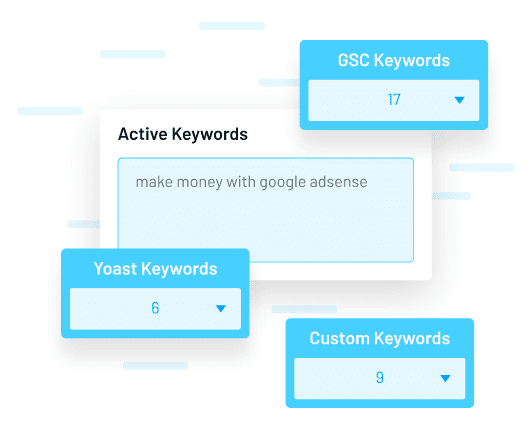
In the digital age, where attention spans are shorter than ever, the way you structure your blog posts can make or break your online presence. A well-structured blog not only keeps readers engaged but also boosts your search engine rankings and drives conversions. Whether you’re a seasoned content creator or just starting out, understanding how to structure blog posts for maximum readability is essential.
This guide will walk you through the best practices for creating blog posts that are easy to read, visually appealing, and optimized for both users and search engines. You’ll learn how to craft compelling headlines, organize your content effectively, and use tools to enhance readability—all while maintaining a strong SEO strategy.
What Is Blog Post Structure and Why It Matters
Blog post structure refers to the way content is organized and presented on a webpage. It includes elements like headings, subheadings, paragraphs, bullet points, and visual elements. A well-structured blog post makes it easier for readers to scan, understand, and engage with your content.
From an SEO perspective, proper structure helps search engines crawl and index your content more efficiently. It also signals to Google that your content is valuable and user-friendly, which can improve your rankings. Additionally, a clear structure increases dwell time, reduces bounce rates, and encourages social sharing—key metrics that influence search performance.
In 2025, with the rise of AI-driven search algorithms and voice search, the importance of structured content has only grown. Search engines are now better at understanding context and intent, making it even more critical to present your content in a logical, scannable format.
How Blog Post Structure Impacts SEO Performance
A well-structured blog post directly influences several key SEO factors:
1. Improved User Experience (UX)
Readers are more likely to stay on a page that’s easy to navigate. Clear headings, short paragraphs, and visual breaks create a seamless reading experience, which keeps visitors engaged longer. This leads to higher dwell time, a strong signal to search engines that your content is valuable.
2. Better Keyword Placement
Proper structure allows for natural keyword placement. By using headers, subheaders, and body text strategically, you can incorporate primary and secondary keywords without overstuffing. This improves relevance and helps search engines understand your content’s purpose.
3. Enhanced Crawlability
Search engines rely on HTML tags like <h1>, <h2>, and <h3> to understand the hierarchy of your content. A logical structure ensures that crawlers can easily find and index your most important information.
4. Increased Engagement Metrics
Engagement metrics such as click-through rate (CTR), bounce rate, and time on page are all influenced by how well your content is structured. A readable, well-organized post encourages readers to explore more of your site, improving these metrics.
Step-by-Step Implementation Framework
To help you implement effective blog post structures, follow this step-by-step framework:
1. Define or Audit the Current Situation
Before you start writing, assess your existing content. Are your posts long and dense? Do they have clear headings and subheadings? Use tools like Screaming Frog or Ahrefs to analyze your current structure and identify areas for improvement.
2. Apply Tools, Methods, or Tactics
Use tools like Yoast SEO, SurferSEO, or Grammarly to optimize your content. These tools can help you check readability, suggest keyword clusters, and ensure your structure is SEO-friendly. Incorporate techniques like the AIDA (Attention-Interest-Desire-Action) or PAS (Problem-Agitate-Solution) formulas to guide your writing.
3. Measure, Analyze, and Optimize
After publishing, track metrics like bounce rate, time on page, and engagement. Use Google Analytics or SEMrush to see what’s working and what needs adjustment. Continuously refine your structure based on user behavior and search trends.
Real or Hypothetical Case Study
Let’s look at a hypothetical case study to illustrate the impact of good blog post structure.
Scenario: A lifestyle blog wants to increase traffic and engagement for a post about “10 Ways to Improve Your Sleep.”
Before Optimization:
– Long paragraphs
– No subheadings
– Dense text
– Poor keyword placement
After Optimization:
– Shorter paragraphs (2–3 sentences)
– Subheadings for each tip
– Bullet points for key actions
– Strategic keyword placement
– Images and infographics
Results:
– Time on page increased by 40%
– Bounce rate dropped by 25%
– Organic traffic grew by 30% within 6 months
This example shows how a simple restructuring can lead to significant improvements in both user engagement and SEO performance.
Tools and Techniques for Blog Post Structure
Here are some of the top tools and techniques to help you structure your blog posts effectively:
- Yoast SEO: Offers a readability score, keyword suggestions, and content optimization features.
- SurferSEO: Helps with keyword clustering, semantic scoring, and content structure analysis.
- Grammarly: Checks for clarity, grammar, and readability.
- Hemingway Editor: Highlights complex sentences and suggests simpler alternatives.
- Canva: Great for creating engaging visuals and infographics.
- Google Analytics: Tracks user behavior and helps you understand what works.
These tools can streamline your writing process and ensure your content is both readable and optimized for search engines.
Future Trends and AI Implications
As AI continues to evolve, the way we structure blog posts will also change. Voice search, multimodal content, and AI-generated content are becoming more prevalent. Search engines are now better at understanding context and user intent, which means content must be even more concise and scannable.
Future trends to watch include:
– Voice-optimized content: Shorter sentences, conversational tone, and clear answers to common questions.
– Multimodal content: Combining text, images, videos, and interactive elements for a richer user experience.
– AI-assisted writing: Tools like Jasper or Copy.ai can help generate outlines, suggest content structures, and optimize for readability.
To stay ahead, focus on creating content that’s easy to consume, visually engaging, and aligned with user intent. Embrace AI tools to enhance your workflow, but always prioritize human readability and value.
Key Takeaways
- Structure matters: A well-organized blog post improves readability, engagement, and SEO.
- Use clear headings: Break content into sections with descriptive subheadings.
- Keep paragraphs short: Aim for 2–3 sentences per paragraph.
- Leverage tools: Use SEO plugins, readability checkers, and content optimization tools.
- Focus on the reader: Write in a conversational tone and prioritize user experience.
By following these guidelines, you’ll create blog posts that not only rank well but also resonate with your audience. Start implementing these strategies today and watch your engagement and traffic grow.
Meta Title: How to Structure Blog Posts for Maximum Readability
Meta Description: Learn how to structure your blog posts for maximum readability, improved SEO, and higher engagement. Follow our step-by-step guide.
SEO Tags (5): blog structure, readability, SEO tips, content optimization, blog writing
Internal Link Suggestions: Parameter #5: Content Quality and E-E-A-T, Parameter #7: On-Page SEO Best Practices, Parameter #9: User Experience and Page Speed
External Source Suggestions: https://yoast.com/, https://www.surferseo.com/, https://www.hemingwayapp.com/










